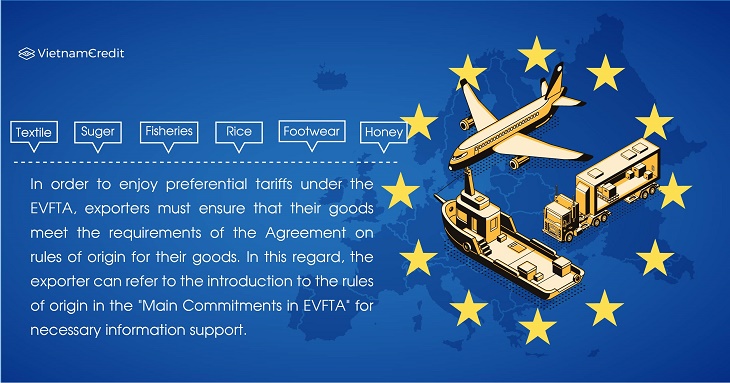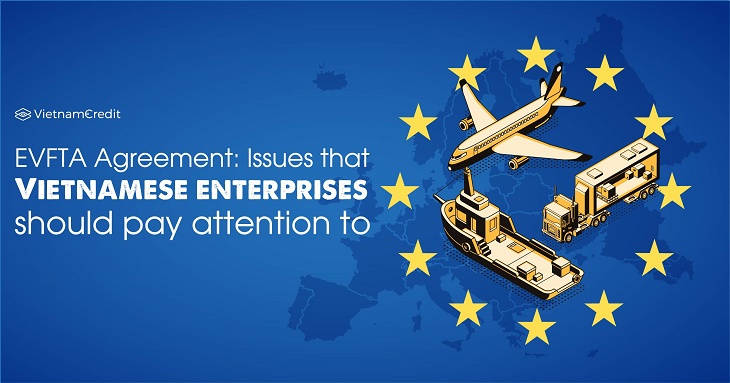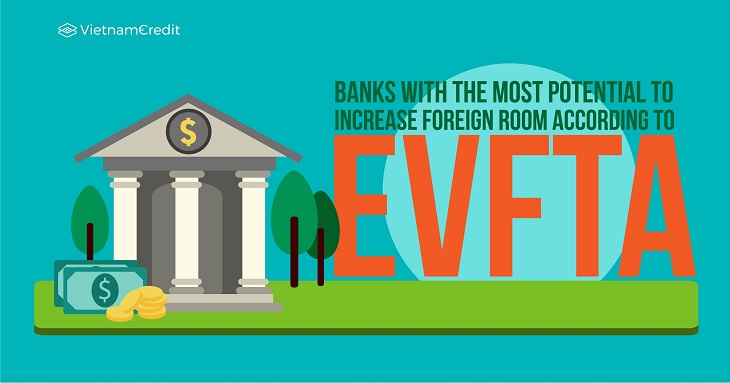After 07 years from the day the agreement takes effect, the EU will eliminate import duties on 99.2% of tariff lines, equivalent to 99.7% of Vietnam's exports
New opportunities for market access to EU member countries
For Vietnamese exports, right after the Agreement comes into effect, the EU will eliminate import duties on about 85.6% of tariff lines, equivalent to 70.3% of Vietnam's exports to the EU. After 07 years from the day the agreement takes effect, the EU will eliminate import duties on 99.2% of tariff lines, equivalent to 99.7% of Vietnam's exports. For the remaining 0.3% of exports, the EU commits to giving Vietnam a tariff-rate quota (TRQ) with an import duty of 0%.
Thus, it can be said that nearly 100% of Vietnam's exports to the EU will be eliminated import tax after a short while. So far, this is the highest level of commitment a partner has given us in a signed FTA. This benefit is especially meaningful as the EU is continuously one of the two largest export markets in our country nowadays
For important groups of goods, EU commitments are as follows:
Within 5 years from the day the agreement takes effect, the EU will eliminate tariffs with 77.3% of Vietnamese exports and the remaining 22.7% will be eliminated after 7 years. This EU commitment is made in accordance with the ability of Vietnam textile and apparel industry to meet the "two-stage" rules of origin (from fabric onwards) (which means that to enjoy preferential tariffs under the EVFTA Agreement, Vietnamese textiles and garments must be made from fabrics of Vietnamese origin). In addition, the EU also flexibly accepts exception to this rule such as fabric with the origin from South Korea or countries where both Vietnam and the EU have FTAs (such as Japan and some ASEAN countries).
Footwear:
The EU committed to reduce taxes to 0% on 42.1% of our exports right after the Agreement came into effect. After 03 years and 07 years from the date of entry into force of the Agreement, this rate shall be 73.2% and 100% respectively.
Fisheries (except canned tuna and fish balls):
The EU will eliminate tariffs on 86.5% of our exports within 3 years, 90.3% within 5 years and 100% within 7 years. For canned tuna, the EU gives Vietnam a tariff quota of 11,500 tons.
Rice:
EU will give Vietnam 80,000 tons of rice quota (including 30,000 tons of milled rice, 20,000 tons of unmilled rice and 30,000 tons of fragrant rice). In particular, the EU will completely liberalize broken rice (which makes it possible to export up to 100,000 tons of broken rice to the EU annually). For rice products, the EU will bring the tax rate to 0% after a certain time.
Sugar:
EU will give us a quota of 10,000 tons of white sugar and 10,000 tons of products containing over 80% sugar.
Honey:
The EU will eliminate tariffs as soon as the Agreement comes into effect and no tariff quotas will be applied.
Products of fruits and vegetables, processed fruits and vegetables, other fruit juices, bags, suitcases, plastic products, glass, and ceramic products:
Basically, the tariffs for these products will be eliminated when the Agreement comes into effect.
Other products subject to tariff quotas:
The EU will give us a tariff quota of 25,000 tons of tapioca starch (the EU's total import is 33,000 tons), 5,000 tons of sweet corn (stomach corn alone will not be subject to tariff quotas and is entitled to a tax rate of 0% within 7 years, 400 tons of garlic, and 350 tons of mushrooms.
The tariff rate in quotas of all goods subject to EU tariff quotas is 0%.
Conditions for enjoying tariff preferences from EVFTA Agreement
In order to enjoy preferential tariffs under the EVFTA, exporters must ensure that their goods meet the requirements of the Agreement on rules of origin for their goods. In this regard, the exporter can refer to the introduction to the rules of origin in the "Main Commitments in EVFTA" for necessary information support.

Time to start implementing the roadmap for Vietnam and EU tariff elimination
The two sides will begin to eliminate tariffs according to the committed schedule from the effective date of the EVFTA Agreement. As a rule, the Agreement shall enter into force on the first day of the second month following the date on which the Parties have notified each other of the completion of their respective legal procedures for entry into force of this Agreement (for Viet Nam, it is the National Assembly’s ratification of the Agreement). The Parties may also agree to select another date for the entry into force of this Agreement.
>> EVFTA: Motivation For Vietnam’s Export Growth
























































